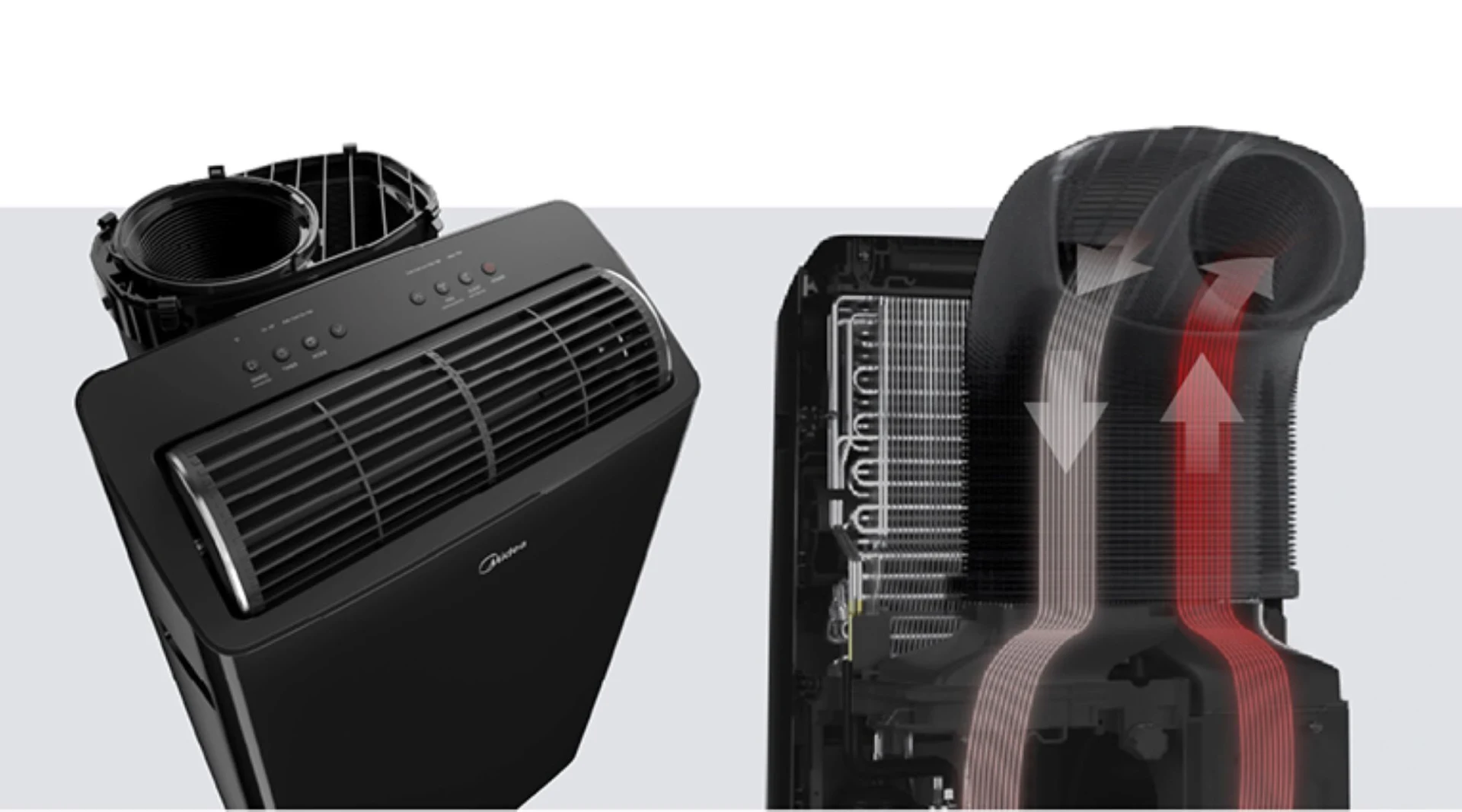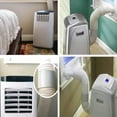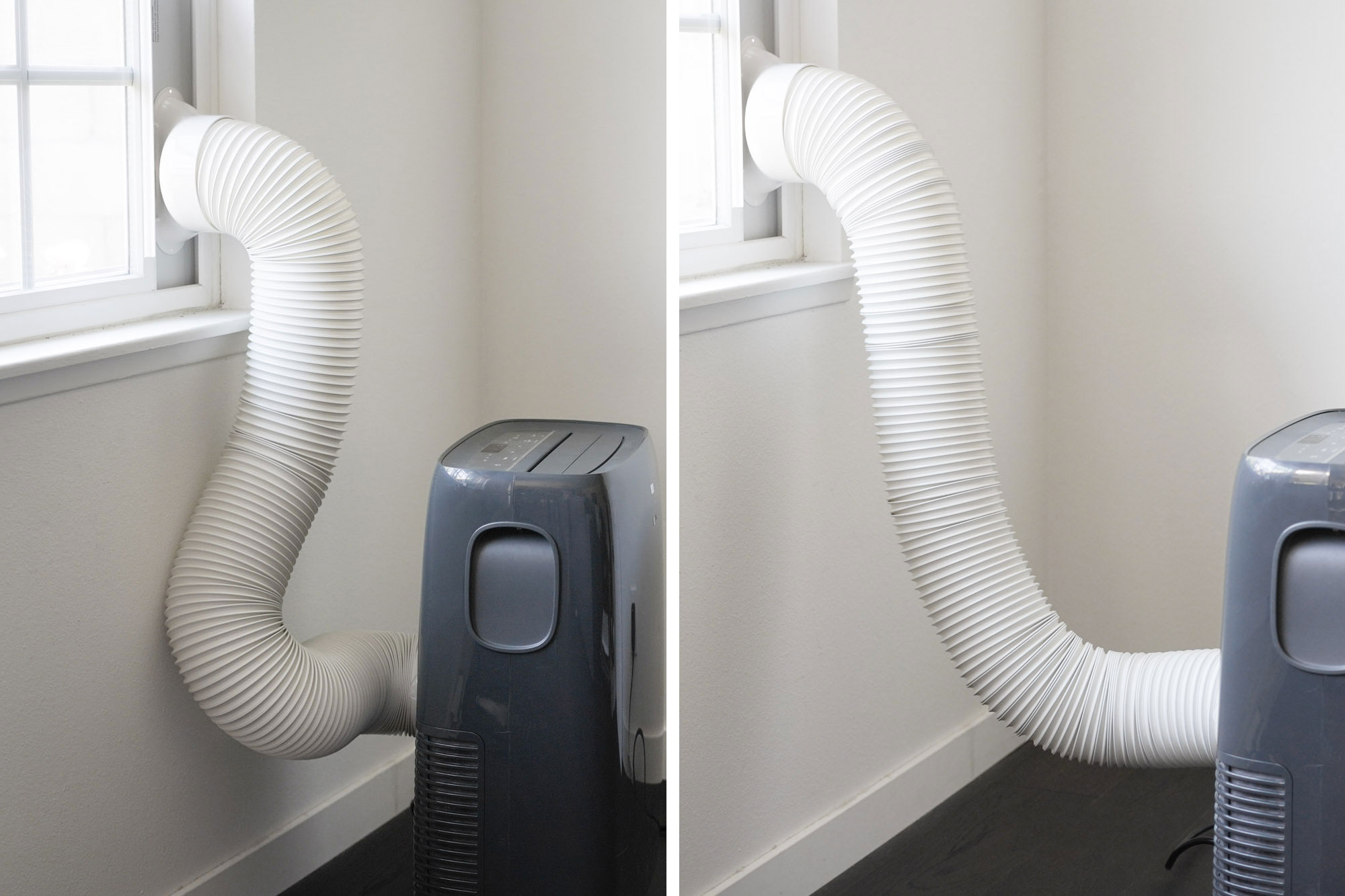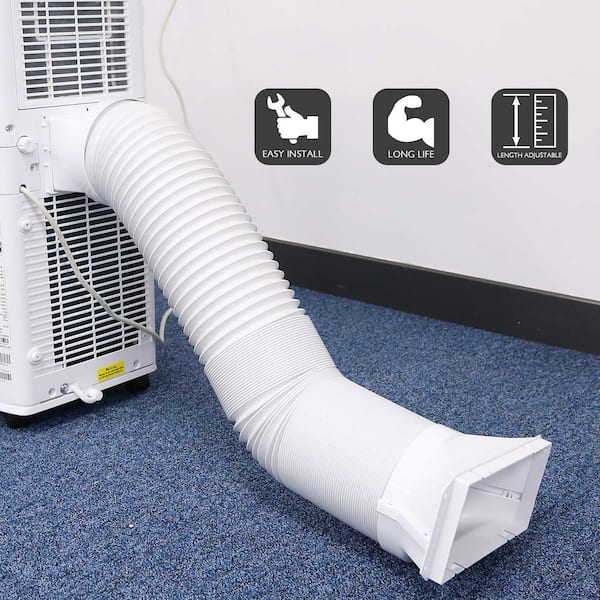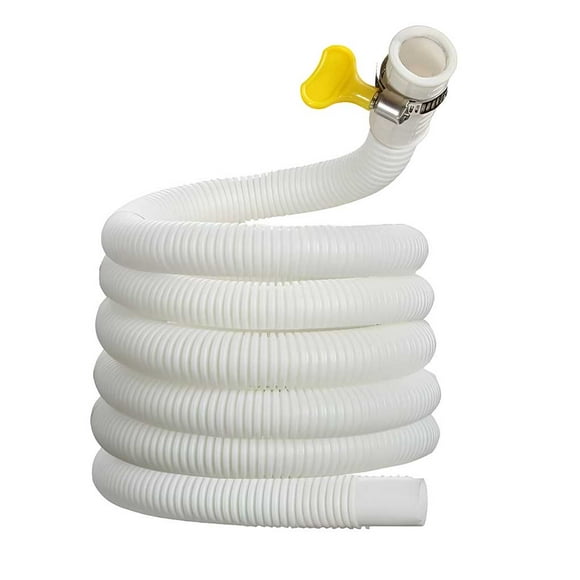Portable Air Conditioner With Extended Hose

As temperatures continue to climb, outpacing historical averages, the demand for effective and adaptable cooling solutions is surging. Homeowners and renters alike are seeking relief from the sweltering heat, and the portable air conditioner market is responding with innovative designs focused on enhanced flexibility. A key development is the emergence of portable AC units equipped with extended hoses, offering greater versatility in placement and improved cooling efficiency.
This article delves into the features, benefits, and considerations surrounding portable air conditioners with extended hoses. We will explore how this design modification impacts cooling performance, installation options, and overall user satisfaction. Furthermore, the article will examine expert opinions and market trends, providing consumers with the information needed to make informed purchasing decisions in the face of rising temperatures and evolving cooling technology.
The Rise of Extended Hose Portable ACs
Portable air conditioners have long been a popular alternative to window units and central air systems, offering a convenient and relatively affordable way to cool individual rooms. The standard design includes a unit on wheels that vents hot air through a hose, typically attached to a window. However, the limited length of the standard hose often restricts placement options, forcing users to position the unit close to a window, potentially disrupting room layouts and aesthetics.
The extended hose addresses this limitation. By offering a longer venting hose, these units allow for greater flexibility in positioning the AC unit within a room. This can be particularly beneficial in spaces with limited window access, unconventional layouts, or when users simply want to minimize the visual impact of the unit and hose.
Benefits of Extended Hoses
The primary advantage of an extended hose is increased placement flexibility. Users can position the unit further away from the window, allowing for more creative room arrangements and reducing the visual obstruction caused by the hose. This is especially valuable in apartments, small homes, or rooms where space is at a premium.
Improved cooling efficiency can also result from strategic placement. By positioning the unit in a central location within the room, cool air can be distributed more evenly, leading to faster and more consistent cooling. This can reduce energy consumption and lower electricity bills, particularly in larger rooms.
Furthermore, an extended hose can minimize noise disruption. Placing the unit further from the seating or sleeping areas can reduce the perceived noise level, enhancing comfort and minimizing distractions. This is a crucial consideration for those sensitive to noise or working from home.
Considerations and Potential Drawbacks
While extended hoses offer several advantages, there are also factors to consider. Longer hoses can slightly reduce cooling efficiency due to increased resistance and potential heat loss. Therefore, it's crucial to choose a unit with sufficient cooling capacity (BTU rating) to compensate for the extended hose length.
Installation can also be more challenging with longer hoses. Ensuring a proper seal at the window vent is crucial to prevent hot air from re-entering the room. Additional accessories, such as window kits or extenders, may be necessary to achieve a tight seal, especially with unconventional window sizes or layouts.
The cost of portable AC units with extended hoses can be slightly higher than standard models. Consumers should weigh the added benefits of placement flexibility and potentially improved cooling efficiency against the increased upfront cost. Careful research and comparison of different models are essential to finding the best value.
Expert Opinions and Market Trends
According to Consumer Reports, portable air conditioners with extended hoses are gaining popularity due to their increased versatility and convenience. Their testing has shown that while some models experience a slight reduction in cooling efficiency with longer hoses, the overall performance remains satisfactory, especially when properly installed and maintained.
The Environmental Protection Agency (EPA) recommends choosing an Energy Star certified portable air conditioner to minimize energy consumption and environmental impact. This certification ensures that the unit meets specific energy efficiency standards, regardless of the hose length. Always ensure proper insulation of the exhaust hose to prevent heat leakage back into the cooled space.
Market analysts at Freedonia Group predict continued growth in the portable air conditioner market, with extended hose models leading the way. This trend is driven by increasing consumer demand for flexible and adaptable cooling solutions, particularly in urban areas and regions experiencing more frequent and intense heat waves.
Installation and Maintenance Tips
Proper installation is crucial for optimal performance of portable air conditioners with extended hoses. Carefully follow the manufacturer's instructions and ensure a tight seal at the window vent. Use weather stripping or foam to fill any gaps and prevent hot air from re-entering the room. Consider using a window kit specifically designed for portable AC units to further improve the seal.
Regular maintenance is also essential. Clean the air filter regularly to remove dust and debris, improving airflow and cooling efficiency. Inspect the hose for any leaks or damage and replace it if necessary. Store the unit in a dry and clean place when not in use.
For optimal efficiency, consider placing the unit in a shaded area, away from direct sunlight. Use curtains or blinds to block sunlight from entering the room, reducing the cooling load on the air conditioner. Maintaining a consistent room temperature can also help minimize energy consumption.
The Future of Portable Cooling
The development of portable air conditioners with extended hoses represents a significant step forward in cooling technology. As climate change continues to drive demand for adaptable cooling solutions, these units are poised to become even more popular. Future innovations may include even longer hoses, improved sealing technologies, and smart features that optimize cooling performance based on room conditions and user preferences.
The focus on energy efficiency will also continue to drive innovation. Manufacturers are exploring new refrigerants and compressor technologies to reduce energy consumption and minimize environmental impact. Smart controls and integration with home automation systems will further enhance the convenience and efficiency of portable air conditioners.
Ultimately, the future of portable cooling lies in providing consumers with effective, adaptable, and sustainable solutions that meet their individual needs and contribute to a more comfortable and energy-efficient future. Portable air conditioners with extended hoses are a key component of this evolution, offering a versatile and practical way to beat the heat.
